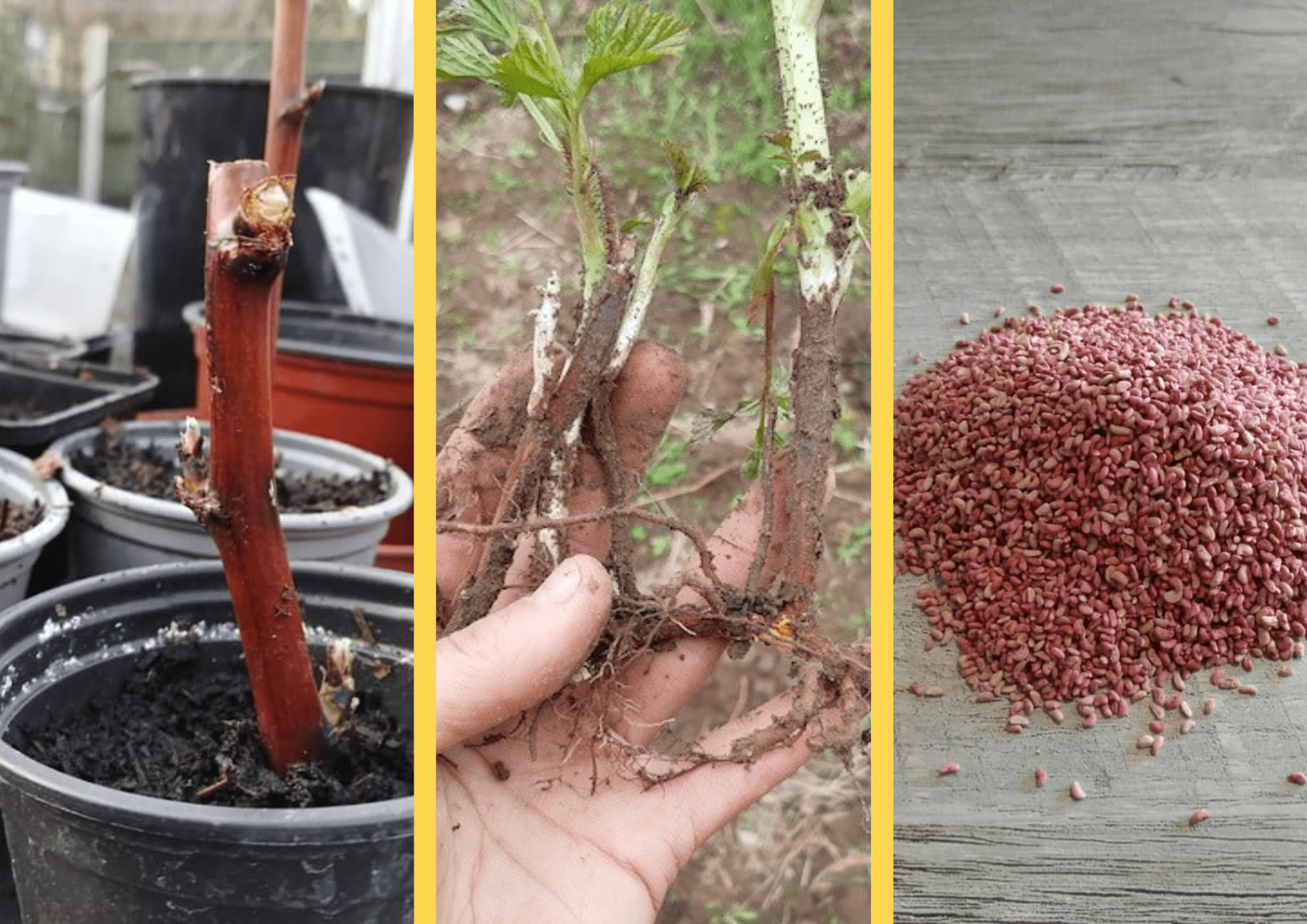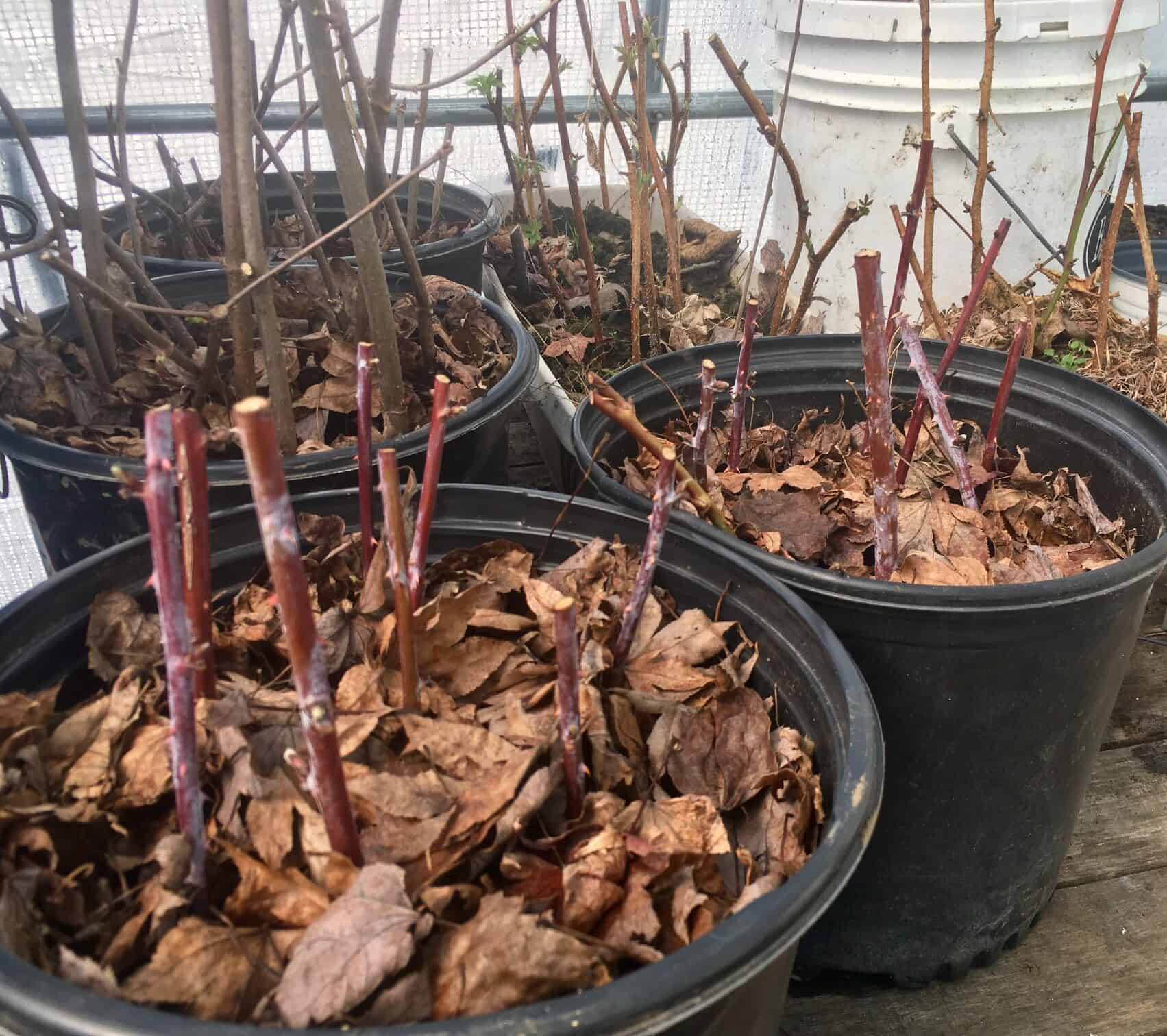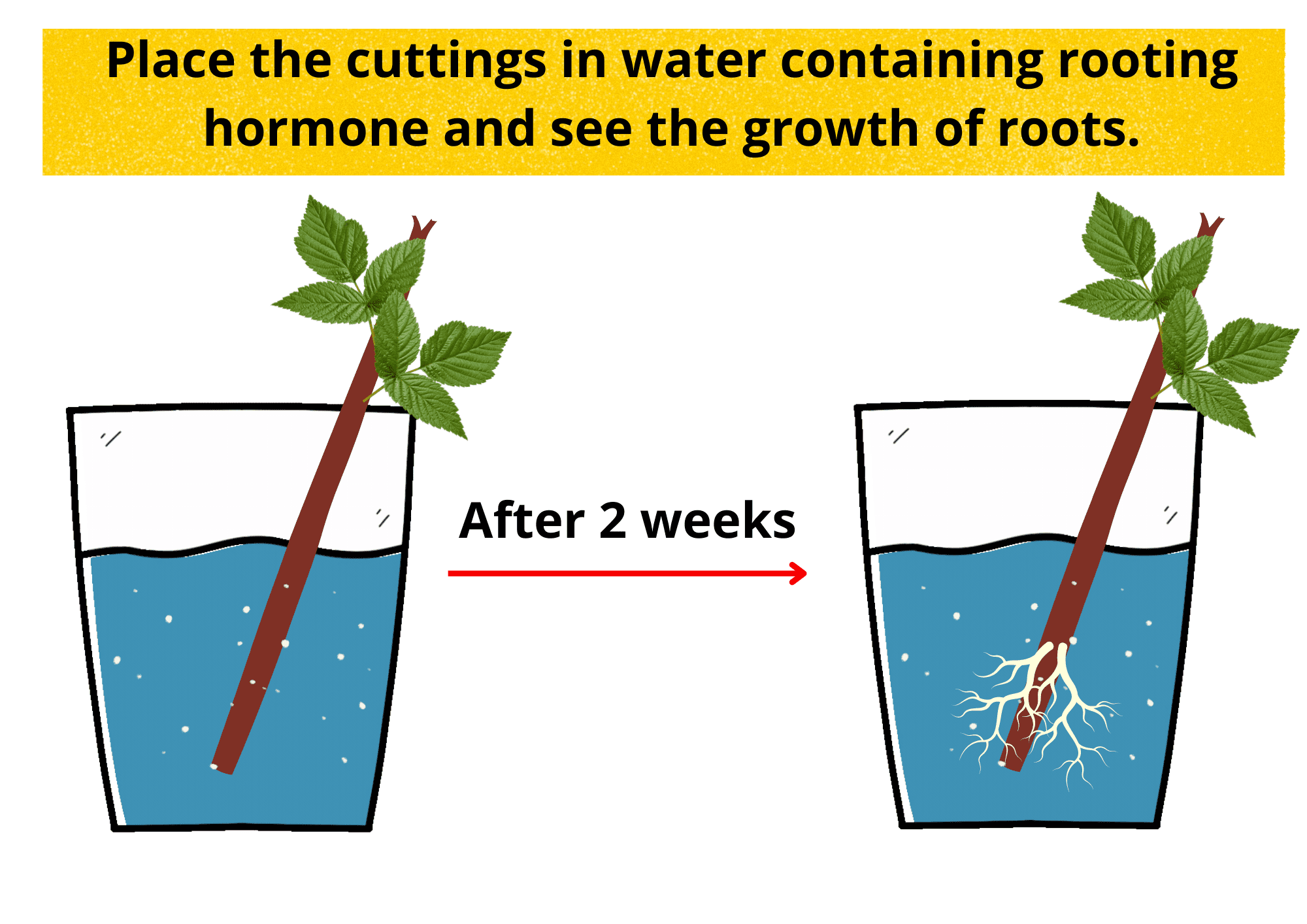Are you confused about utilizing parts of Raspberries you accidentally pruned this winter?
Don’t throw it away. Instead, use it for propagating more Raspberries.
However, propagating Raspberries needs patience and the proper instruction, so read the article thoroughly not to go astray.
Table of Contents Show
Why Propagate Raspberries?
Raspberries are famous for their vigorous growing speed, which many regards as a weed if not controlled.

Besides, propagating Raspberries has goodwill advantages.
- Propagating Raspberries using stem or cane cuttings helps to keep the mother plant’s original traits in the new plant.
- Suckers are like little Raspberries, so you don’t have to wait for roots and leaves to develop. You can simply plant it and see it grow.
- Raspberries growing from seeds is helpful if you want to crossbreed new varieties.
- Using root cuttings allows the Raspberries to grow and develop new canes early.
Best Time To Propagate Raspberries
Raspberries follow a unique growth pattern where the roots and crowns are perennial while the stems shed leaves every winter, being a biennial.
Similarly, it is also ideal for propagating the suckers in early spring along with cuttings from the roots.

For suckers, the more immediately you harvest and plant, the better they will grow.
And, of course, do this for all the Raspberry varieties, whether they are summer-bearers or fall-bearers.
How Do You Propagate Raspberries?
The propagating technique of Raspberries includes root and stem cuttings, suckers transplant, and seed cultivation.
Black and purple Raspberries are fall-bearers, but red Raspberries are confusing as they can either be summer or fall-bearers.
However, the methods of cutting preparation and propagating are the same.
1. Propagating Raspberries From Suckers
Suckers are mini-Raspberry plants that sprout from the root system of the mother plant. They are connected to the mother plant using lateral stolon or runners.
Usually, gardeners consider stems or cane and root cuttings to propagate, but suckers are also blissful choices that give good results.
Thus, new canes also vegetate from suckers.
- Look for a healthy sucker growing on a two to three years old mother plant at a distance of 30 cm.
- Take a shovel and dig a circle at least 4 inches in diameter around the sucker without hurting the roots.
- Tilt the shovel and gently lift the sucker with some soil around its root zone.
- Dig a hole about three inches deep in well-draining soil under a sunny site and mix compost with up to eight inches of deep soil.
- Place the suckers in the hole three feet apart, and cover their roots with soil so they can stand firmly.
- Apply water around the planted suckers so that the soil settles down.
It is ideal for watering suckers once a week until they develop new canes and leaves.
2. Propagating Raspberries From Stem or Cane Cuttings
Before propagating Raspberries, know the cane or stem types from which you can take some cuttings.
Canes are the places where the fruit develops, which can be of two types.
Primocanes – Stems that represent the first year’s growth
Floricanes – Stems that represent the second year’s growth
Unfortunately, fall-bearers such as black or purple Raspberries don’t readily propagate using stem cuttings.
For these Raspberries, another method called “simple layering” is famous.

Meanwhile, you can propagate Raspberry stem cuttings in soil or water.
Propagation In Soil Medium
The different Raspberries have individual propagation processes in soil.
Propagating Summer-bearers
- Cut a four to six inches long stem section in the early morning using sterilized pruners with at least two or three leaves.
- Two to five leaf nodes above the cut end are even better.
- Remove the lower leaves to expose leaf nodes and rub the bottom to shift the focus from leaf growth to root development.
- Take a terracotta pot and fill it with the potting mix that contains sandy-loam soil with added perlite.
If you are trying something organic, use well-aged compost or manure prepared during the fall or a few weeks before planting.
- Dip the cuttings in the water and then into rooting hormone powder.
- Make six holes, about three to four inches deep, using a pencil, and place the Raspberry canes.
- Keep the pot in an area that receives direct sunlight and lightly moisten the top soil layer.
- Cover the cuttings using plastic wrap to keep them warm and moist.
Check the progress after two to three weeks by giving the cuttings a little tug with your fingers to see if the roots have developed.
If the cuttings remain firm and steady, they must have developed roots.
Propagating Fall-bearers
For fall-bearers, you can follow this strategy of simple layering first.
- Choose a healthy primocane that is free of diseases.
- Scrape a cut an inch deep into the tissue using a sharp knife, about a foot from the cane’s tip.
- Dig a small trench about three inches deep near the cane.
- Pull the cane down to the ground and make the scraped part touch the trench in the soil.
- Cover it with soil from the top and place a stone to hold the entire cane.
- Make sure you keep at least six inches of the stem tip free.
- Water the area to keep it moist.
Keep an eye on the layered stem for six to eight weeks until new growth emerges, indicating that roots have formed.
Propagation In Water Medium
Propagating Raspberries in water isn’t as effective as propagating in soil, but it will do the job of sprouting the roots.
- Take about four to six inches long cuttings with two or three leaves at the top from a healthy primocane.
- Ensure two to five leaf nodes are at the lower end of the cuttings.
- Make a hormone solution by mixing 0.5 mg or 1 mg of hormone powder in one liter of distilled water in a glass jar.

- Place the cuttings in the water and keep the entire setup in a sunny place.
- Change the water in a couple of days if it turns murky with the same strength as the hormone solution.
After two weeks, you can see the roots developed in the cuttings.
Once you see the roots, transfer the cuttings to a well-draining potting mix.
You can also plant the cuttings directly in the garden and be generous to maintain the right growing conditions.
3. Propagating Raspberries From Root Division
Both the summer and fall-bearers can be propagated via root division.
To propagate, follow these steps.
- Uproot a healthy Raspberry plant during winter when it is dormant.
- Cut off three inches long young rootlets nearest the mother plant’s root ball.
- Use pruners and trim off the bottom end of rootlets diagonally.
- Make holes about three inches deep, using a pencil, in the same potting mix mentioned above.
- Dip the cuttings first in water and then in the rooting hormone powder and place them in the holes.
- Place six cuttings per 24-36 inches wide pot.
- Lightly moisten the soil with water. And place the cuttings in a shaded area away from sunlight.
Shoots may take several months to appear, so you can apply water-soluble fertilizer once they do.
Place the newly sprouted cuttings in your garden in early spring.
Refer to the video for any visual aid!
4. Propagating Raspberries From Seeds
Seeds can be another way to propagate Raspberries if you want offspring different from the mothers.
The first step of propagating Raspberries using seeds is to harvest the fruits first.
So, you need to harvest the fruits of Raspberries in summer. Once you have gathered the berries, you can now extract the seeds.
- Place the Raspberries in a mesh colander with 1/4th mm holes under the running sink water.
- Crush the berries along the side of the mesh using a spoon or spatula.
- Pick the individual light-brown colored seeds using a wet toothpick.
- Peel the excess flesh from the seeds under the low running water.

After collecting the Raspberry seeds, you can continue with the following.
- Soak the seeds in water for 24 hours.
- Prepare a seed tray containing two-inch thick low-nutrient seed starter compost.
- Place the seeds individually about an inch apart from each other.
- Keep the entire setup near a north-facing window during the winter and transfer the tray to the area that receives the dappling sunlight during spring.
After four to six weeks, the seeds may germinate, and you can transfer the seedlings to four-inch pots once they reach about one inch in height.
You can also transplant the seedlings to a larger pot and place them in a sunny area with mildly acidic and well-draining soil.
However, propagation methods for wild & cultivated Raspberries are similar.
Tips To Care For Raspberries After Propagation
If your Raspberry plant grows healthy roots, move it to the ground, and ensure these primary care requirements.
- Plant your growing Raspberry plant in a sunny spot receiving full sun for 6-8 hours.
- Provide 1-2 inches of water weekly during the growing season and 4 inches during the harvesting stage.
- Maintain a temperature between 50ºF and 90ºF.
- Sustain ideal humidity levels around 50-60% for complete growth.

- Provide sandy-loamy soil having pH levels between 5.6 and 6.2.
- Prune Raspberries plant parts that diseased or spent canes during late winter or early spring after the plant matures.
- Transplant your potted Raspberry plant during early spring or late fall.
- Use balanced type (10-10-10) fertilizer once in one or two weeks during peak growth. Avoid fertilizing the plant during the fall and winter.
- Grow Raspberry companion plants like Garlic, Onion, Marigold, etc, for organic protection from pests.
After propagation, Raspberries become weak and are under frequent attack by pests. So, spray neem oil during late winter or early spring to deter them.
From Editorial Team
Conclusion!
Propagating Raspberries can become one of the most leisurely and calming exercises for gardeners.
All you need to look for is the right time and season to grow summer and fall-bearer varieties.
Healthy stems, roots, suckers, and seeds are suitable materials to initiate propagation, so do not waste them.


